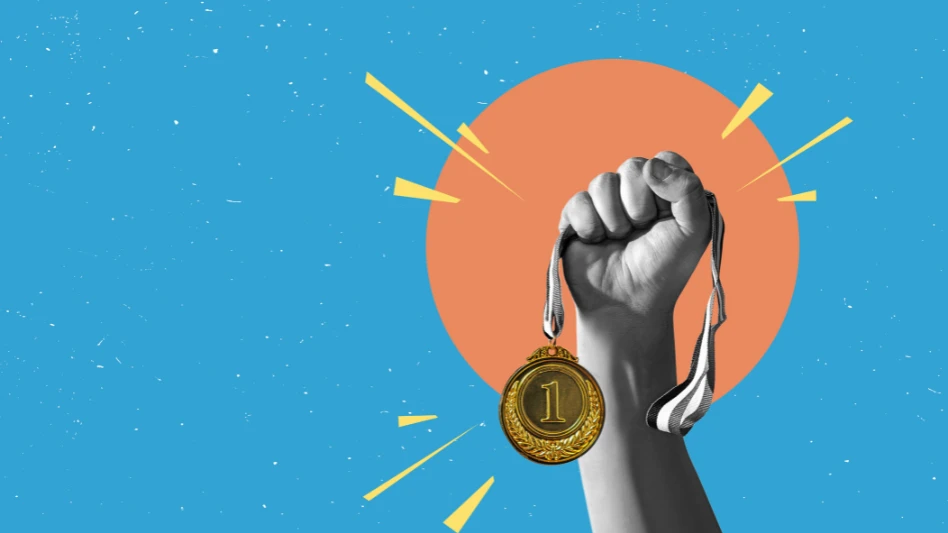
Winter 2017-18 arrived late much like the past few winters. While many regions experienced significant and prolonged cold in December and early January, no appreciable amounts of snow in the population centers came during that cold stretch. While most apply salt during any snow event irrespective of whether it is truly needed or not, the demand volume knob was never turned beyond three on a scale to 10 this past winter. Yes, product did move, but in manageable amounts and at manageable velocity.
Velocity is the key.
While the supply side of the business can keep pace with intermittent or sporadic storms, problems arise when snowstorms come in back-to-back and on cold pavements. That weather pattern demands application of deicing products as the snow fighter shifts from a mechanical fight with plows and loaders to a chemical fight of salt and other products. If you want to see trouble coming, then pay close attention to weather patterns that stack up winter events in a tight delivery pattern as well as events that arrive late in the season when supplier stockpiles and inventories are intentionally driven down for economic considerations.
There is enough salt on this planet to fully treat a nuclear winter; however, not all of that is sitting in a stockpile around the corner. In fact, virtually all of it is in the ground and sea awaiting mining and harvesting. The supply side of the industry works hard to anticipate what will come for winter weather, then in a carefully orchestrated and choreographed plan they schedule stockpile initial filling, then fill the market for pre-season demand. Then the tricky part comes – when to re-load the stockpile and at what velocity. It usually takes a month or more to fill the market. Remember that fact when you need a complete reload in days. The system can’t meet that kind of intense demand on a big scale.
Manage risks.
Long-range weather forecasting and risk-taking are hallmarks of the decision tree when it comes to bringing in more product for bulk salt stockpiles and packaged deicer warehouses. It’s a big gamble and one in which there’s more than $100 million of products in play at any point in time. If we, the supply side, don’t have it in stock, we can’t sell it. It’s not hard to understand that component. However, the consumer market is averse to risk and refuses to purchase enough product to last the entire winter due to the uncertainty of the weather, so the burden of predicting the exact amount needed falls on the supply side. Generally, there’s disbelief, frustration, and anger directed towards suppliers when shortages occur, but they are caused by end users refusing to accept more risk.
Municipalities understand the risk and planning needs. Most have at least five to seven treatable events’ worth of inventory in stock to start the season. As soon as the first event is done, they initiate reloading, hoping to stay ahead of the curve if things turn tight. Private markets do not subscribe to this approach and generally have one to two storms of inventory, and then tend wait until they are sure that a storm is coming to call for a delivery.
That’s when trouble can begin. If they can hold on for a week or so before getting a delivery, the supply side can work them into a schedule and get product delivered in a manageable way. However, when everyone calls demanding immediate delivery and are told that cannot happen due to demand, panic tends to set in and the initial order for one is frequently doubled or tripled.
At no time in the history of man has doubling or tripling demand on an unavailable product helped to improve availability. It only worsens it … and likely exponentially. That’s the 50,000-foot view of the industry to help frame the conditions by which shortages occur.
Seeing shortages in April.
We generally declare our season over around Valentine’s Day. Historically, the market tries to run out inventories and will use whatever they have on hand to manage storms that tend to begin diminishing in frequency and intensity as we get closer to the start of summer. However, the past few years have been counter-cyclical and delivered much of the snow after January. It becomes even more difficult to determine what stockpile volumes will meet demand in the early spring adding another layer of unpredictability to the equation.
This year, we saw exactly that happen as the late season storms stimulated demand and, in some regions, created shortages as municipal supply trumps demand from the private markets. I’ve discussed the pitfalls for the salt suppliers in failing to supply municipal contracts as the penalty for supply failures are intensely costly and most suppliers will forsake spot market private supply to fulfill municipal. This is exacerbated by the late season where inventories are intentionally drawn down by all involved.
Understand price pressure.
While the overall demand for product was generally flat for an average winter, prices have been hammered down by a rush of new suppliers to the market that they believed was lucrative and short. In the spring of 2015 the market was very short. However, since then it has not been and now there is a bit of a glut of suppliers overall leading to continual downward price pressure.
That can only go for so long before the costs of holding inventory for extended periods coupled with on-going shortages of truck drivers and new DOT regulations on electronic data logs drive up the cost of transportation, forcing recovery of those costs. I do not see huge increases coming but I think we will see prices move up a bit in some markets more than others.
For example, the private market in the Chicago area jumped $10/ton in the spring as supplies ran out due to end of season syndrome. Salt and deicers are commodities like any other – price is driven by supply and demand, and demand was up and supply was down. It’s hard to predict the future, but I expect we’ll see some price recovery in bulk salt and possibly some bagged products as we move through the pre-season of winter 2018-2019.
Environmental pressure
This is a topic we all need to keep our eyes on closely. There has been a series of studies, reports and articles about rising levels of chlorides in North American fresh water. The rivers and lakes of the U.S. are beginning to show signs of the impact of what I will call excessive use of deicers.
This is a bit of a touchy subject, but we are routinely slathering surfaces with more deicing products than needed as fear of litigation drives that application. I am thinking that at some point, the EPA will likely regulate the business since every pound of deicing products purchased in the U.S. is “disposed of in the environment.”
While public safety has trumped other considerations, more attention is being directed at deicers for corrosion and chloride pollution. A recent article questioned if chlorides are the next phosphorus, referring to bans on phosphorus in detergents because of their role as a macro-nutrient to feed eutrophication – algae bloom in stagnant waters which chokes out eco-systems. There is real concern about the chloride impact in fresh waters so keep your eye on this topic; it may drive a whole new approach to chemical deicing and, at a minimum, it will advocate safe and careful applications of salt and allied products.
Generally, there is plenty of product available for the next season across the entire nation. I expect to see a little upwards price movement in certain regional markets – not all – but some regions will likely see an uptick in costs next season. As potential trade wars loom, their impact on premium deicers and salt may also play a role in increased costs. Environmental considerations and pollution from deicers will continue to grow as an issue and the industry will need to keep current with best available practices to ensure we are doing our part to minimize adverse impact from deicers.
Whenever I hear complaints that our products are dissolving cars and bridges, and ruining our waterways, I remind the complainer that if they would simply stay home until the storm is over and let the snow be cleared off and then have one application at the end, problem solved. The only reason we put any deicing products down is for public safety … there is no other reason.
Always remember that point and remind people who say we’re killing their [fill-in-the-blank] with our deicing products, that their insistence on driving in snow and not slowing down is what is causing that problem – not the people charged with treating the roads that the public demands be black and wet through the winter event from first to last flakes.
Rob English is the president of MeltSnow.com, based out of Massachusetts. He contributes a regular analysis of the salt and deicing industry for Lawn & Landscape sister magazine, Snow Magazine.
Latest from Lawn & Landscape
- LMN partners with Attentive.ai
- Get to know the generations working for you
- Addressing addiction in landscaping
- Fairway expands national footprint with 6 acquisitions
- Graze Robotics opens new headquarters in Plano, Texas
- Addiction in the green industry
- Kress earns Sourcewell approval
- The best laid plans





